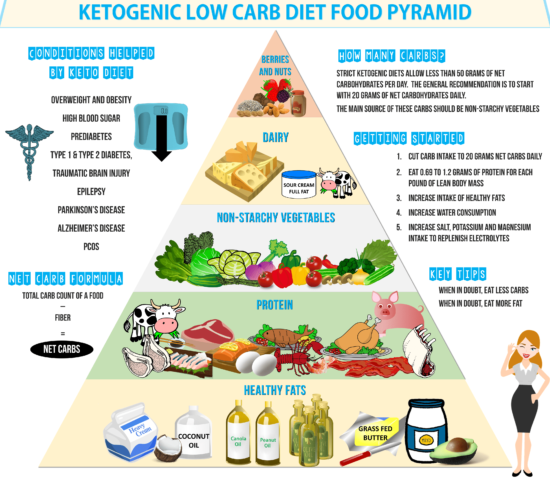The July 2017 issue of Neurology Now summarizes three diets that are thought to be beneficial for brain health. Dr. Kelsey Hanlon, PT, DPT, of Wendy Webb Schoenewald Physical Therapy and Vestibular Rehabilitation, #WWSPT, previously discussed the Mediterranean Pyramid and MIND diets and now she looks at the Ketogenic diet.
Diet #3: Ketogenic Diet
What it may protect against: Seizures in epilepsy for both adults and children, also in some cases migraines and other neurologic conditions
Examples of foods consumed on this diet: cheese omelet with heavy cream, chicken nuggets made from cream and coconut flour, crab cakes with mayo, almond flour and eggs, salad with creamy dressing.

Important: Unlike the other two diets, this ketogenic diet should only be attempted under supervision of a doctor’s guidance as it is considered to be a medical therapy.
This diet is high in fat, low in carbohydrates and contains modest protein. Heavy whipping cream, mayonnaise, butter, and oils primarily provide the fat in the ketogenic diet. The strictest form prohibits sweets, bread, potatoes, rice and pasta.
The Ketogenic diet was first developed about 100 years ago when doctors began to notice that patients with epilepsy experienced fewer seizures when they fasted. Despite how long the diet has been developed, there are a few competing theories as to how it works. When the body is starved of carbohydrates it causes the liver to convert fats from food into fatty acids, and a byproduct of this process is the creation of ketones which can cross the blood brain barrier. One theory is that these ketones control the electrical impulses in the brain that cause seizures. Another theory is that it is the low carbohydrates is the important part of the diet and that keeping blood glucose stable is what helps to control the seizures.
In any event, the diet has been proven to work well for pediatric epilepsy and adult epilepsy. A small Italian study demonstrated a reduction in frequency and duration of migraine headaches, but this study was small and more research is needed in this area.
Dr. Kelsey Hanlon, PT, DPT, #WWSPT

Leave a Reply